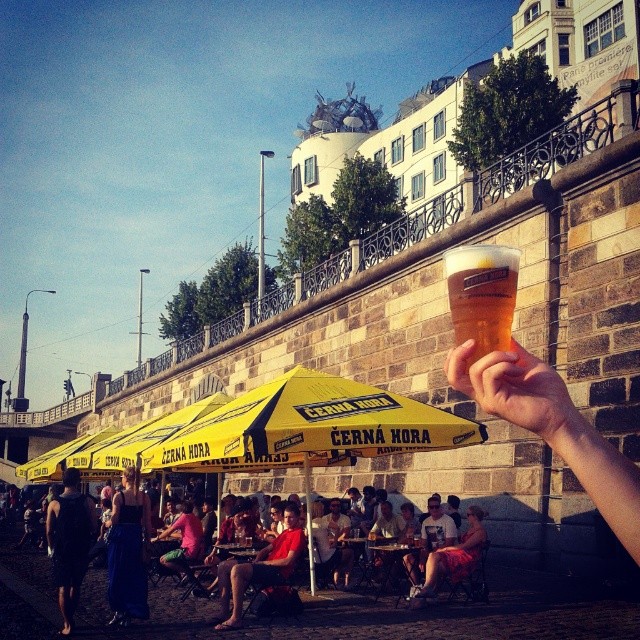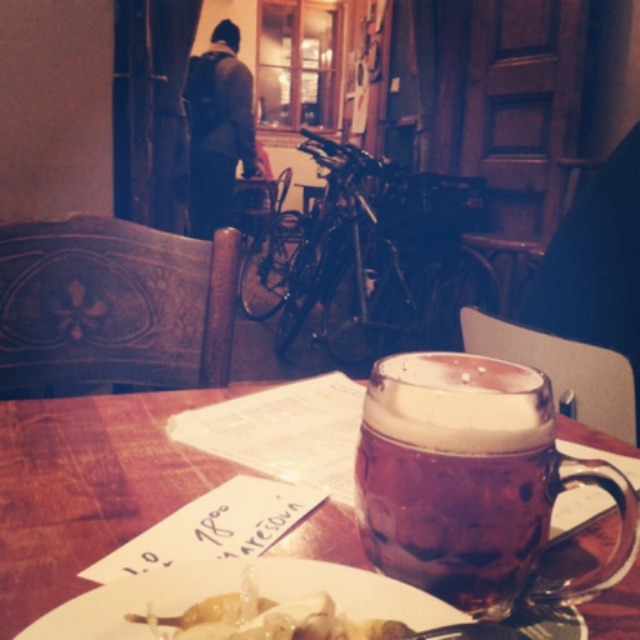They say that travel opens your mind and broadens your horizons, and while I’m not entirely sure who exactly “they” are, the people who make up these kinds of sayings do have a point. Travel allows us to experience different cultures and remove ourselves from our own patterns, which is why so often, people “find themselves” while travelling. It brings a sense of discovery and freedom that our lives occasionally lack. But what if I told you that there’s a way to experience not only a different culture, but also a different lifestyle, right here in Prague? And no, I’m not talking about something strictly limited to Czech culture, either.

Prague’s Invisible Exhibition, or Neviditelná Výstava, gives you a chance at just that. Sorry, Harry Potter fans, it does not give you your own invisibility cloak. What it does do, though, is allow you the experience the daily trials and tribulations that visually impaired or blind people go through every day — in a very cool and fun way.
The exhibit, which is located by Café Neustadt around the corner from Karlovo Náměstí and the tram stop Vodíčkova, offers tours in Czech and English at various times throughout the day. It’s recommended to call ahead to book a visit, but I promise, it’s very much worth the planning.

I, as one of the clumsiest people I know, had some doubts as I walked into the reception with a group of friends eager to try a new adventure. At the desk, we bought our tickets from two friendly representatives who, thankfully, laid out the whole process for us. We were to take a seat in the waiting room, furnished with memory games and exercises to show what it’s like to actually be blind in today’s world. When the tour starts, they explained, we would be led into a room that simulates total darkness and would be led through all of the usual day-to-day activities as a blind person would experience. We wouldn’t be alone, however, as a trained, legally blind guide would take us through the course and lead us from room to room and activity to activity, ensuring our safety and subsequent amusement.
Our group was made up of a family with a small child and a group of spouses, and everyone took the experiment in stride, with the exception of the small girl, who was afraid of the dark. Be warned: they’re not kidding when they say they simulate total darkness. I had my eyes open the entire time and could make out nothing around me. That’s not to say that it’s not for kids, though, as the exhibit has a specialised tour for children, which our guide explained follows a fairy tale and turns the kids into heroes that save the day (something that sounds fun even to me as an adult).
At first, everyone in the group was a bit quiet and subdued. Mainly, I think we were a bit worried about bumping into or accidentally grabbing strangers, but that didn’t last very long as one of the first things that happens when your sight gets taken away is that you start relying heavily on touch. Soon, we were bumping into each other and apologising with laughs as if we were all old friends, and a sense of camaraderie filled the air. This was aided immensely by our guide, who kept the mood light by cracking jokes and did a great job of making sure that no one got lost or wandered anywhere particularly dangerous.

The highlights for me were definitely the simulated woodland area where everyone was asked to feel an object and then identify it based solely on its shape (a particularly amusing exercise that could make a great party game), and then the very end of the tour where the guide leads you to a café and serves coffee, soda, or beer, and invites any questions the group has for him about living as a blind person. This was the most enlightening part of the tour and for me, really hammered home the idea that there are more perspectives of the world than our own. While my world is luckily filled with colours and vibrant images, our guides’ are not — but that hasn’t impeded his life in any real way. He still lives life the fullest, just experiencing things in a different way than those of us with sight.
And in fact, isn’t that what travel is all about? Opening up your mind and realising that the way we see the world is not exactly the way that others do? And realising that it’s that which makes the world so much more special? Travel isn’t about seeing the things that you already know and appreciate, but about learning and celebrating the things that make us different. It’s the differences that make things beautiful.
Want to try out the Invisible Exhibition for yourself? You can find out more on their website, or read the overwhelmingly positive reviews on TripAdvisor.
And if you’re looking for some other things to do either before or after your tour, we have some fantastic suggestions!

If you’re looking for a place to hang out and bask in the sun after total darkness, there’s no better place on a warm day than Naplavka, Prague’s hipster hangout. We’re constantly telling our friends to go there, and that’s because we can’t get enough of it! Naplavka is Prague’s riverside promenade, which runs up and down the banks of the Vltava. But it really turns into something special around Karlovo Náměstí, where, in the warmer months, bars open their patios and open-air markets spring up, including stands selling the city’s latest culinary triumphs. There’s no better place (or view) on a warm night to enjoy some live music, dancing, great food, and some of the most refreshing beer in Prague!
In the colder seasons (or maybe if the hustle and bustle of Naplavka isn’t really your scene), we’ve still got some options for you. While you might be able to throw a stone and hit any number of bars or cafés in Prague, one of the best is just around the corner from the Invisible Exhbition, on Řeznícká ulice, or Butcher’s Street. Originally home to the king’s favoured butchers, the street now boasts a number of cool shops and cafés, including a personal Prague Urban Adventures favourite, Café Kolíbka.

Café Kolíbka has just the right combination of great beer, wine, and lemonades, an amazing nakladaný hermelín (pickled cheese) plate, friendly staff and owners, and a cosy, laid-back atmosphere. While it’s recommended to make a reservation any time after 6pm, you can’t go wrong with this café. If you do decide to visit, keep your eyes peeled, because there’s a very good chance that you might run into some of your favourite Urban Adventures guides there as well! (We even do autographs and selfies upon request.) Café Kolíbka’s website is only in Czech, but English-speaking clientele are more than welcome.
If you’re hungry after the exhibit, you’re also in luck, as one of our favorite restaurants is just around the corner. If you’re starving and want to check out some Czech food with a twist, there’s no better place than Jiná Krajina. Even though Jiná Krajina means “different region” and has a number of amazing non-Czech dishes on their menu, it’s a great place to taste modern Czech cuisine — the menu is full of vegetarian options as well as updated, but still respectfully Czech dishes.

For a treat, try something from their specials menu, which changes daily depending on what’s in-season and is sure to please even the pickiest foodie. It’s an awesome place for both lunch and dinner (and there are also other locations throughout the city in case you want to try it in another neighbourhood, too) — but a reservation for dinner goes a long way to ensuring that you can actually get a seat. On weekends especially, do as the locals do and reserve a spot. Then just sit back, enjoy the city, and, as we say here in Prague, “Dobrou chuť!”
The post Different perspectives in Invisible Prague appeared first on Urban Adventures Blog.